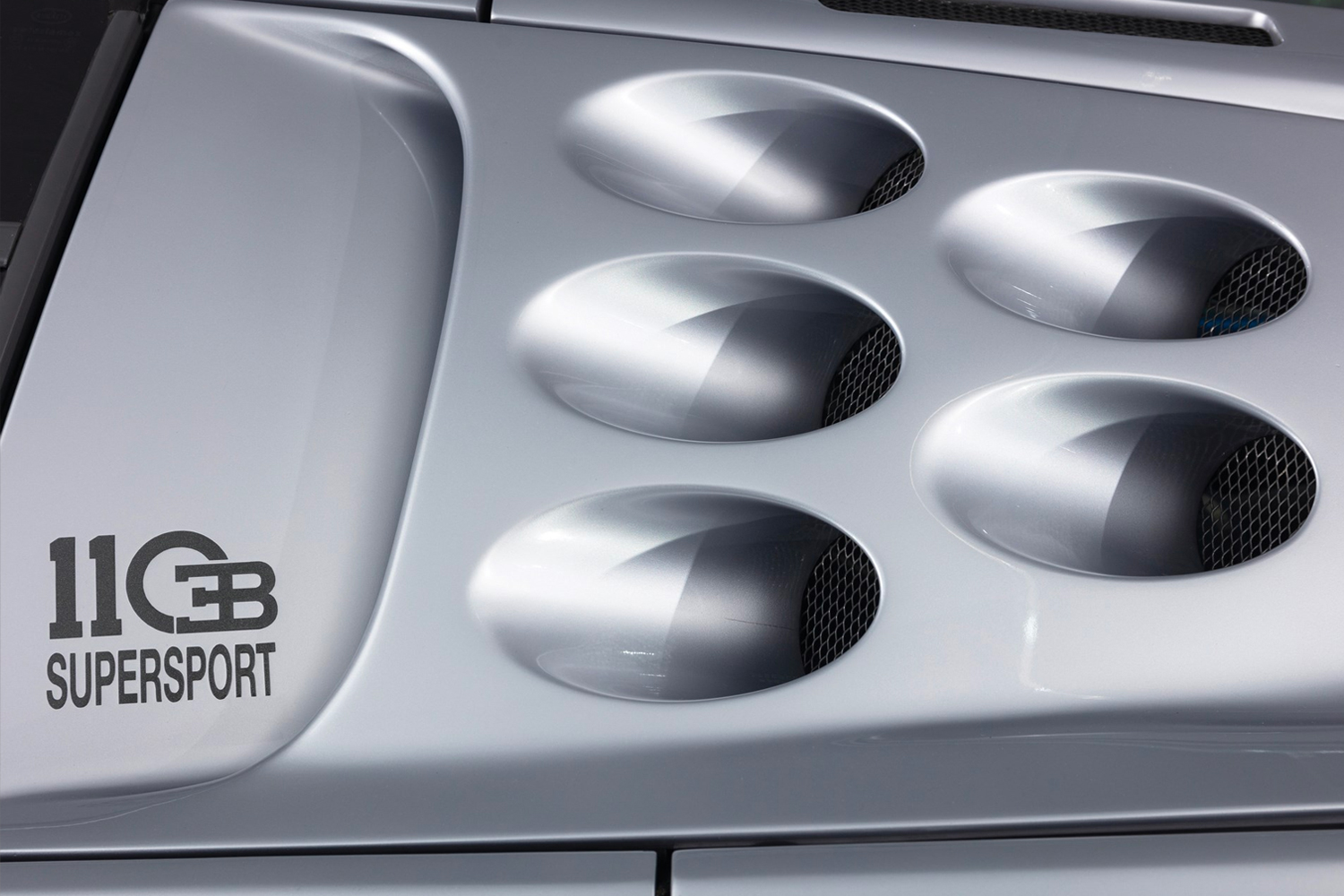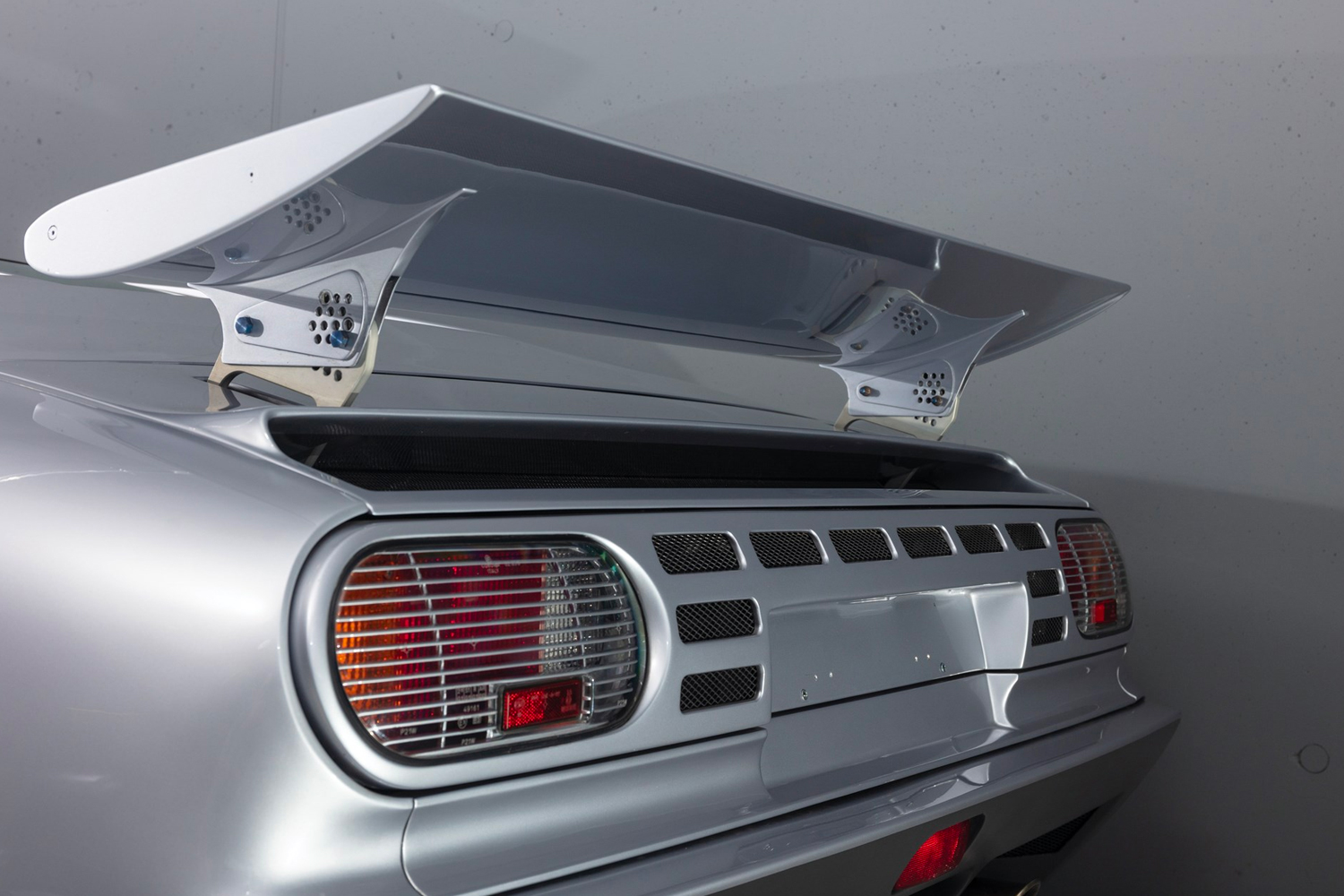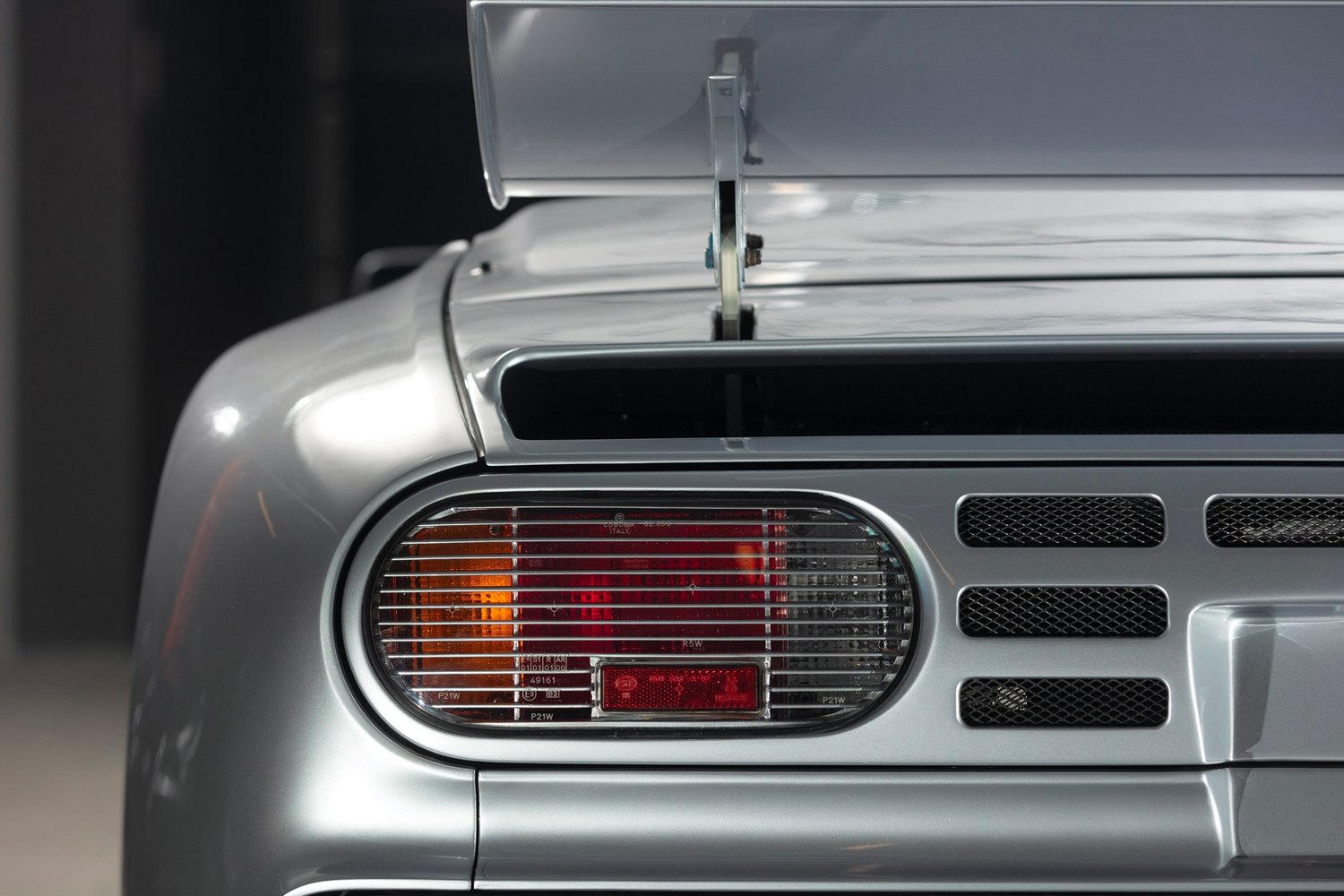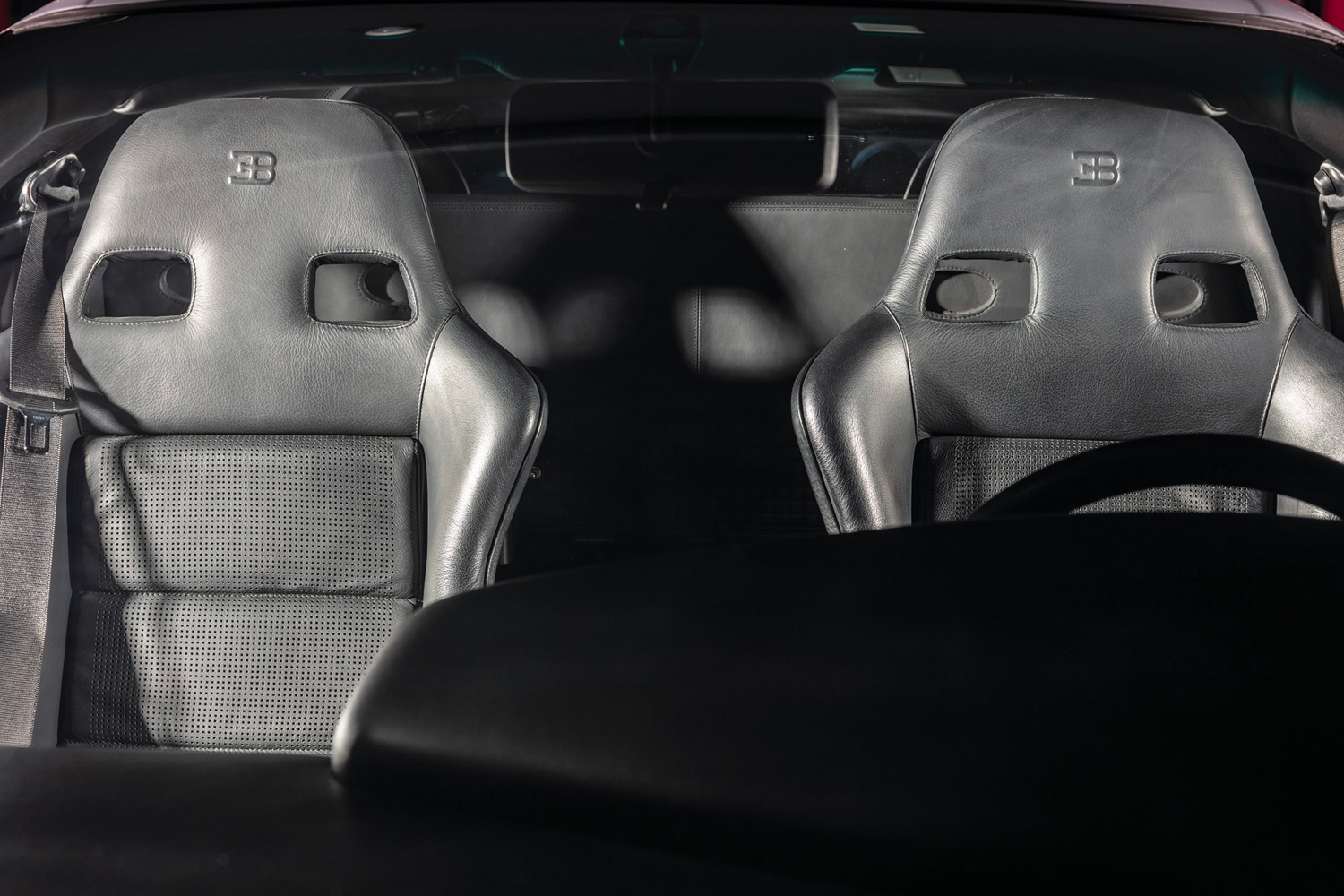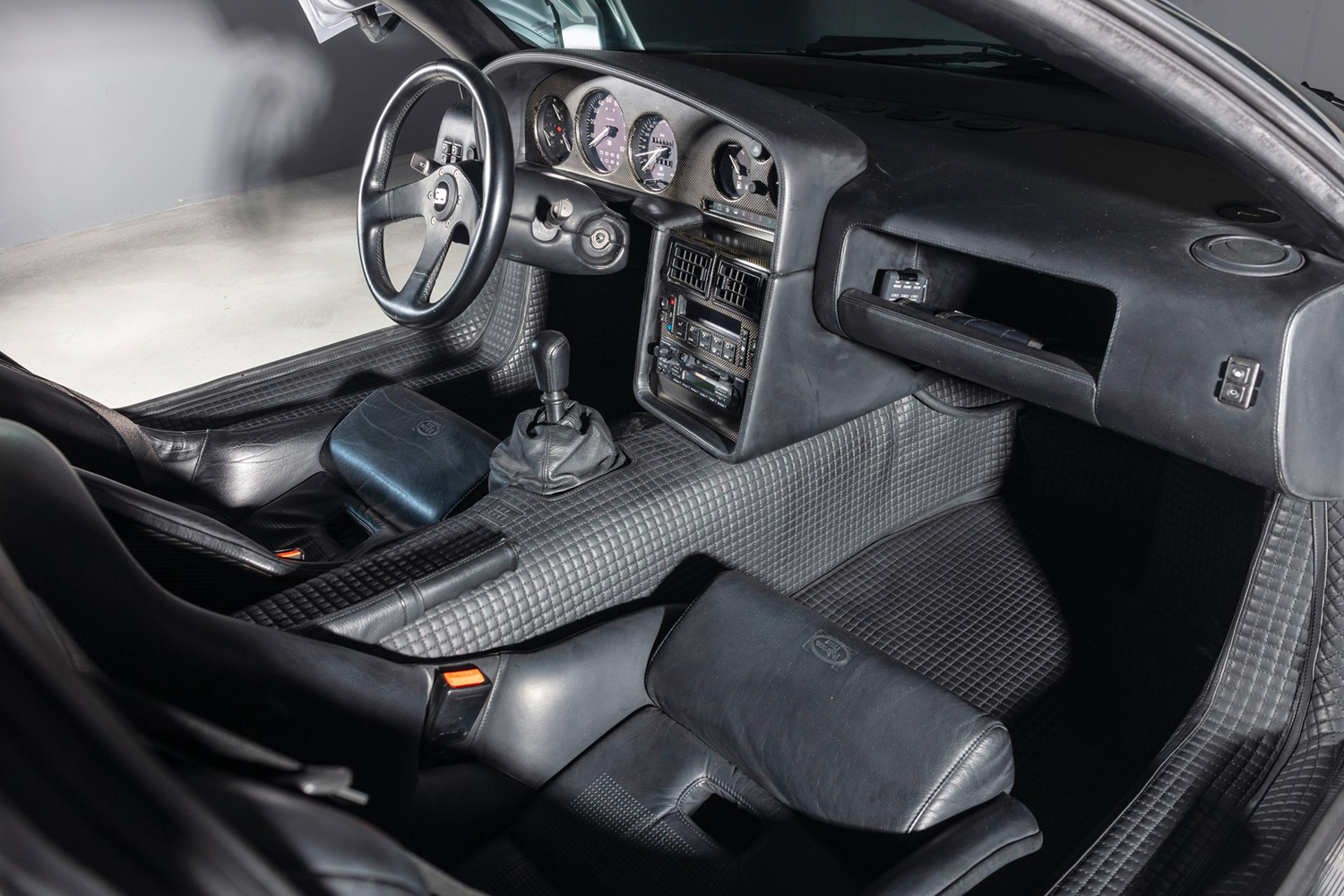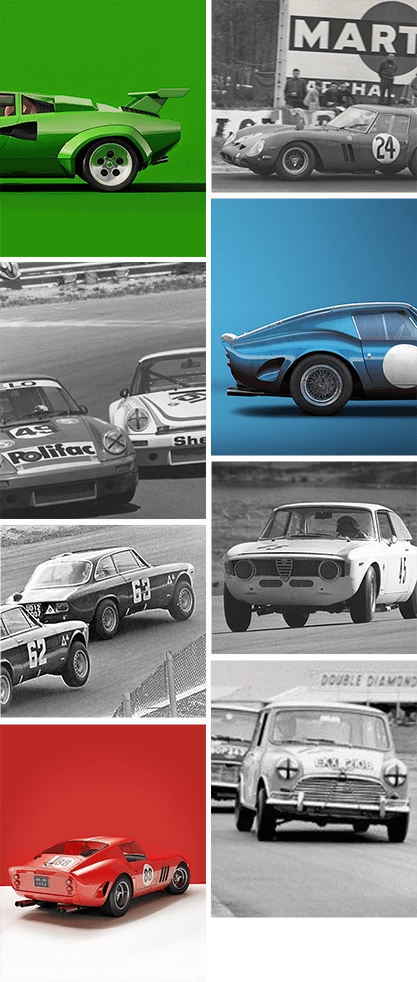This website uses cookies in order to enhance the overall user experience.
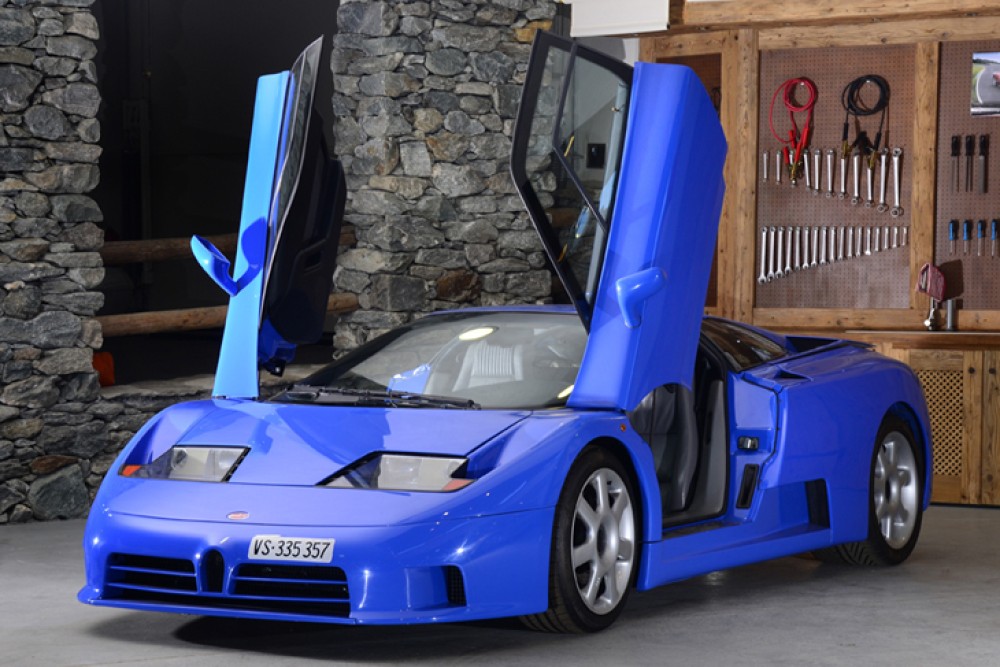
Initially the Bugatti Company died along with founder Ettore Bugatti in 1947, but luckily, Romano Artioli – a wealthy entrepreneur who already owned a Ferrari dealership – bought the Bugatti name rights in 1989. Artioli then signed Marcello Gandini, the famous Italian designer of the Lamborghini Miura and Countach, and resumed the production of Bugatti cars close to Modena, Italy.
2 years later, in 1991 this new Bugatti team presented its first car, the EB 110. This model name was an homage to Ettore Bugatti (EB) who would have turned 110 that year.

EB110 Design
One of the first things of the EB110 that stand out are the upward opening “scissor” doors, and the beautiful aerodynamic design elements. In order to shape the lightweight but sturdy aluminum body and create effective aerodynamics, Bugatti even partnered up with a French aviation firm – Aerospatiale. These various body panels, subsequently, were connected to the monocoque chassis made of carbon fiber, making the EB 110 the first road car to successfully employ this technique.
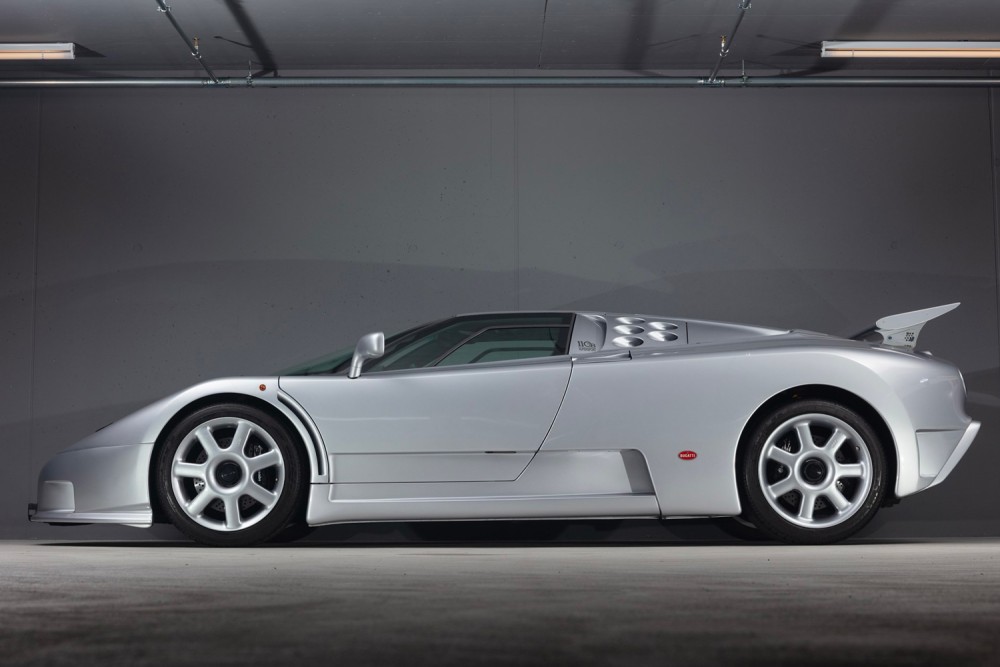
Across the EB 110’s exterior there are plenty of design features that demonstrate Bugatti’s strive for perfection. There’s the horseshoe shaped grille and an adjustable spoiler to change the downward force at will. Also, there are intake and outtake vents in front and behind all 4 wheels to cool the Brembo disc brakes, and the EB110 SS even has intake vents behind the side windows in order to cool the engine more effectively.
Stepping inside, you’ll experience plenty of lateral support from the Bugatti designed sport seats, while Nakamichi assisted with the luxurious-for-the-time entertainment system. The rest of the interior is neatly veneered in fine leather but not really noteworthy compared to the rest of the car.
The original powerplant
In the middle of the car, you’ll find a 550hp producing 3.5-liter engine that you can see through its glass cover. This V12 with dual overhead camshafts is enhanced by 4 IHI turbochargers, and transfers power to all 4 wheels through a manual 6-speed gearbox. In effect, the EB 110 does 0-100km/h in roughly 3.6 seconds and reaches a top speed of 336km/h!

The EB110 SS
The EB110 SS – Sport Stradale or Super Sport – is even more powerful. Moreover, it is also made lighter by a good 150kg through stripping the interior down to the absolute essentials only and replacing the heavy 4-wheel-drive system by a rear-wheel-drive setup. With an increased turbo boost and lowered compression rate of 7.5:1, the EB110 SS boasted 615hp, while some versions even got up to 650hp! In effect, the 0-100km/h was reduced to 3.2 seconds and the top speed increased to 355km/h!
The SS version was the first Bugatti to show up at the 24 Hours of Le Mans in 55 years. During training for the 1994 race, it was faster than all the Prosche Carrera RSRs, DeTomaso Panteras, and Dodge Vipers participating. However, right before the EB110 SS entered the racetrack, it got a fuel leak. Since the Bugatti team sealed the leak with Araldite, the car could only operate with half a fuel tank until the Araldite had dried up. After that, it quickly caught up with the competition, but that wasn’t the end of it yet. At some point, the turbochargers faulted and had to get fixed, and ultimately a broken tire caused the car to crash into the barriers and ended the race for Bugatti like that.
While the EB 110 SS participated at another Le Mans, and races such as the Daytona 24 Hours and Watkins Glen, it was the Speed Record on Ice in 1995 that is still the car’s most impressive credential. On the frozen seas of Oulu in Finland, Gildo Pallanca-Pastor reached a top speed of 296.3km/h, which tells you a lot about the supercar’s 4-wheel-drive system that Bugatti equipped the EB 110 with.
The fate of Bugatti
The EB 110 is a true rarity of a sports car, with just 95GTs and 31 SS’s ever having entered the market. Although Michael Schumacher purchasing an SS helped to market the EB 110 for a short while, the market for supercars crashed right around the car’s introduction. As a result, the $350.000 price tag was too much for Bugatti to get them the sales they needed. Subsequently, the company quickly went bankrupt and had to sell its materials to B Engineering, who built their Edonis model out of it. In 1998, the German company Volkswagen bought Bugatti for roughly $50 million, and still keeps the marque alive today.
Regardless of its initial sales failure, a well-kept EB 110 these days sets you back about $1.5 million dollars. With a 355km/h top speed, the EB 110 SS wasn’t the fastest supercar of its time (that was the McLaren F1), but its heavy 4-wheel-drive system enables you to race this supercar on the roads, regardless of what the weather throws at you.

